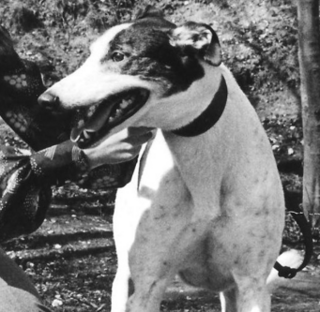Ipswich Stadium was a greyhound racing stadium situated in Ipswich, Suffolk.
Crayford & Bexleyheath Stadium was a greyhound racing and motorcycle speedway stadium in the London Borough of Bexley.
Elland Road Greyhound Stadium also known as Leeds Greyhound Stadium was a greyhound racing stadium in Leeds, West Yorkshire.
White City Stadium (Nottingham) was a greyhound racing and motorcycle speedway stadium in Trent Lane, Nottingham.
Breck Park Stadium was a greyhound racing stadium in Liverpool, England.
Seaforth Greyhound Stadium was a greyhound racing stadium in Liverpool, England.
White City Stadium (Liverpool) was a greyhound racing stadium in Liverpool, England.
White City Stadium was a greyhound racing and speedway stadium in Old Trafford, Greater Manchester, England.
The 1929 UK & Ireland Greyhound Racing Year was the fourth year of greyhound racing in the United Kingdom and Ireland.
The 1930 UK & Ireland Greyhound Racing Year was the fifth year of greyhound racing in the United Kingdom and Ireland.
The 1937 UK & Ireland Greyhound Racing Year was the 12th year of greyhound racing in the United Kingdom and Ireland.
The 1939 UK & Ireland Greyhound Racing Year was the 14th year of greyhound racing in the United Kingdom and Ireland.
The 1948 UK & Ireland Greyhound Racing Year was the 23rd year of greyhound racing in the United Kingdom and Ireland.
The 1964 UK & Ireland Greyhound Racing Year was the 38th year of greyhound racing in the United Kingdom and Ireland.
The 1967 UK & Ireland Greyhound Racing Year was the 41st year of greyhound racing in the United Kingdom and Ireland.

The 1970 UK & Ireland Greyhound Racing Year was the 44th year of greyhound racing in the United Kingdom and Ireland.

The 1971 UK & Ireland Greyhound Racing Year was the 45th year of greyhound racing in the United Kingdom and Ireland.
The 1975 UK & Ireland Greyhound Racing Year was the 49th year of greyhound racing in the United Kingdom and Ireland.
The 1977 UK & Ireland Greyhound Racing Year was the 51st year of greyhound racing in the United Kingdom and Ireland.
The 1980 UK & Ireland Greyhound Racing Year was the 54th year of greyhound racing in the United Kingdom and Ireland.



